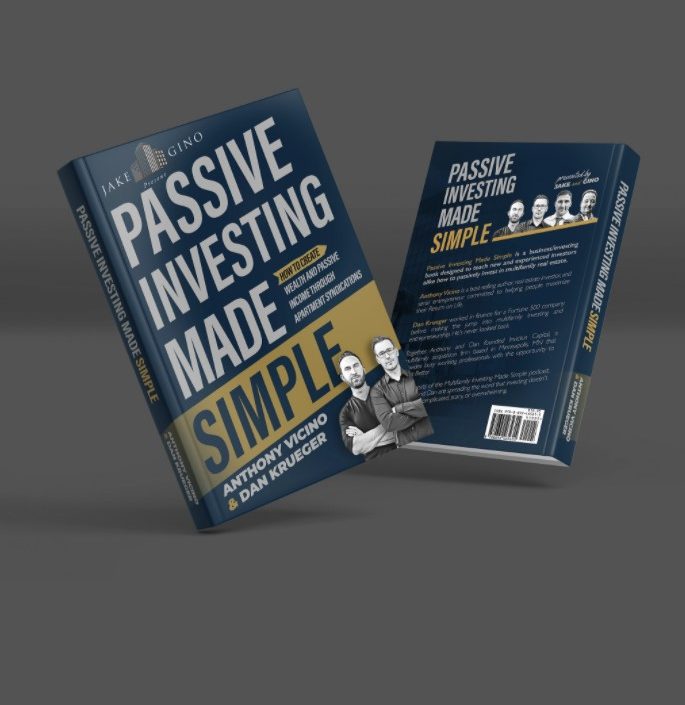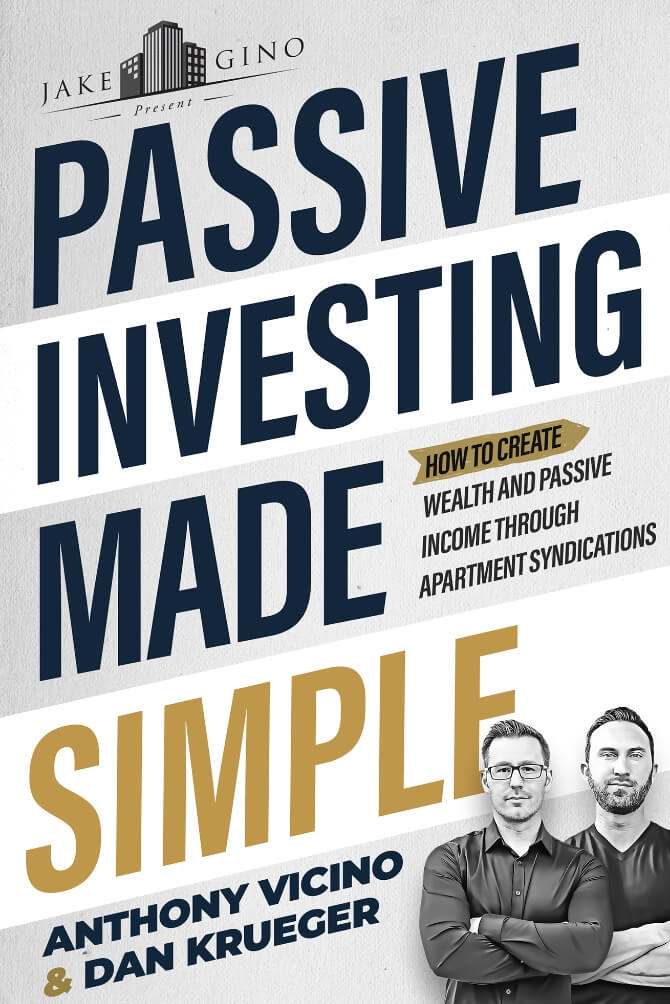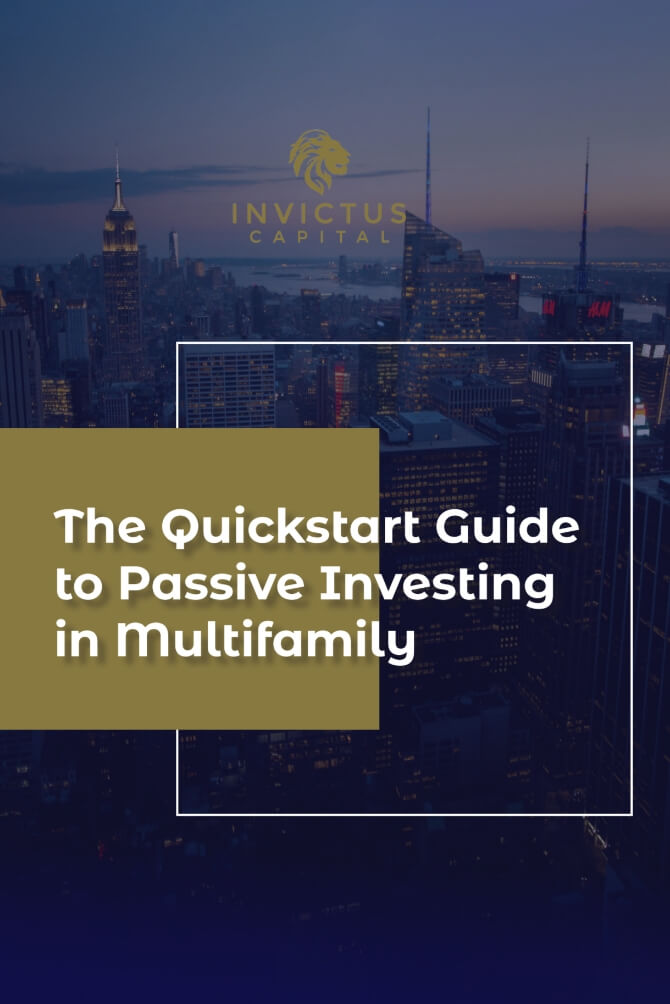For today’s episode, we will be discussing part three of the capital stack, mezzanine debt.
This week we’re covering the mezzanine debt or also known as the junior debt or subordinate debt.
We will talk about these things…and more in another episode of Multifamily Investing Made Simple in under 10 minutes.
Tweetable Quotes:
“as we work our way up the capital stack, the risk profile, the position starts to increase slightly.” – Dan Kreuger
“they don’t necessarily get to claim the property if it goes south. So it is a little bit riskier position” – Anthony Vicino
“It’s just really the only thing that makes it mezzanine is the fact that it comes after the senior debt.” – Dan Kreuger
“a really common one would-be seller financing. So if you’ve negotiated with the seller to carry back a part of the down payment or something like that, that’s a perfect example of mezzanine debt” – Anthony Vicino
LEAVE A REVIEW if you liked this episode!!
Keep up with the podcast! Follow us on Apple, Stitcher, Google, and other podcast streaming platforms.
To learn more, visit us at https://invictusmultifamily.com/
**Want to learn more about investing with us?**
We’d love to learn more about you and your investment goals. Please fill out this form and let’s schedule a call: https://invictusmultifamily.com/contact/
**Let’s Connect On Social Media!**
LinkedIn: https://www.linkedin.com/company/11681388/admin/
Facebook: https://www.facebook.com/invictuscapitalventures/
YouTube: https://bit.ly/2Lc0ctX

The Capital Stack Part Three (Mezzanine Debt)
Anthony Vicino: [00:00:14] Hello and welcome to Multifamily Investing Made Simple podcast, it’s all about taking the complexity out of real estate investing so today you can take action to date. I am your host, Anthony, not Bertino sometimes, but you know, Bandele Ticino of Invictus Capital, joined as always by Dan Never Kröger. Never Kreger. Always Kruger.
Dan Krueger: [00:00:38] I don’t then do good, I feel like a really solidified what our names are and how they’re pronounced.
Anthony Vicino: [00:00:44] I wanted to make sure everybody knows I get the question a lot. I get the question. A lot of people go, is it Justino? Is that, you know, a lot of times I want to say Veneno, they want to add extra letters in there. And I know that you’ve had I’ve had issues with your name in the past.
Dan Krueger: [00:00:58] Everybody does.
Anthony Vicino: [00:00:59] If you go back to those early podcast episodes, you would be left with the impression that I do not know what Dan’s name is and you’d be right.
Dan Krueger: [00:01:07] Yeah. We’re working on those work in progress to work in progress.
Anthony Vicino: [00:01:10] So then what are we doing today? We actually know what I’m going to take this one. You just sit there, look pretty. So today we are going to continue our five-part series into the capital stack. If you missed last week’s episode, you’re going to want to start there. If you have no idea what the capital stack is going to start with that episode, get the high-level view because now we’re going to go another level deeper. Last week we covered the senior debt. This week we’re covering the mezzanine debt or also known as the junior debt or sub subordinate debt. So walk us through. How is this debt fundamentally different than senior debt?
Dan Krueger: [00:01:49] Yeah, well, people remember from the last episode in the series, as we work our way up the capital stack, the risk profile, the position starts to increase slightly. And for that reason, the cost of capital starts to increase slightly so that that senior debt that we talked about last time is going to be the lowest cost of your capital. Their interest rates on that are going to be these days around three percent. And that’s the cost of your capital, is what you’re paying to get that money in part of your deal. And so when you go up next, what happens is when you get into the mezzanine subordinated or junior, whatever you want to call it, that next layer of debt, if you do have it, is going to be in the second position, which means that there’s going to be a second position in the second position, lean on the property, which means that if things go south, that senior debt gets paid first and this mezzanine subordinate junior debt is going to be in the second position. So if there’s no more money left and liquidation if things blow up, then these guys might be so well. And so for that reason, the cost of capital at this level is going to be a bit higher. I don’t really have a range to provide for people on that, but just know that it’s going to be more than the senior debt. But it’s probably going to cost you less than giving up equity.
Anthony Vicino: [00:03:11] It definitely should cost a little bit less than giving up equity. If it’s not, then you’ve probably got some pretty bad terms there. I would think your junior debt should probably come in a couple of basis points or maybe maybe
Dan Krueger: [00:03:23] A couple of points.
Anthony Vicino: [00:03:24] Yeah, six to six to eight percent, I think is probably pretty straightforward here. The thing with the mezzanine is that sometimes it’s not collateralized, which means that it’s not backed by the property. And that’s because whoever is sitting in the senior position might be saying, we don’t want anybody else coming in behind us collateralized so that that debt position, while they would get paid out before the equity people, the stakeholders, they don’t necessarily get to claim the property if it goes south. So it is a little bit riskier position, but it’s still less risky than preferred equity or common equity, which we’ll be talking about in the following episodes. Now, who would we typically be getting mezzanine debt from? Like, is this from the bank? Is this from a different entity? Like who are we getting this from?
Dan Krueger: [00:04:13] Either one? Honestly, it could be a bank. It could just be a private equity fund that doesn’t necessarily want an equity position and a deal. They’d rather just do a debt deal. It could just be an individual like a hard money lender or someone that’s like a hard money lender. When we’re talking about big apartment buildings, we’re not typically going into the hard money lenders, per se. But just for the sake of differentiating this individual from some of these larger organizations where it’s it’s just a guy with some money that wants to invest, but he wants to do it via debt, you know, it could be any type of entity. It’s just really the only thing that makes it mezzanine is the fact that it comes after the senior debt. And like you mentioned, that there doesn’t necessarily need to be a lien on the property for this position. And if there isn’t, then that would probably bump the cost of it up a smidge higher.
Anthony Vicino: [00:05:04] So, yeah, I think it would be pretty rare to get at, say, like a bank coming in on the second position without it being collateralized like a bank isn’t probably going to want to take that position, but a really common one would-be seller financing. So if you’ve negotiated with the seller to carry back a part of the down payment or something like that, that’s a perfect example of mezzanine debt. It’s not secured. And a lot of cases by the property itself, they bring a little extra money in. They’re just getting the coupon. Another case might be just investors who want a. Lower but more conservative return that is, sits higher in the Capstick, so some operators will structure their deal where they offer common equity, those people typically have the potential for the highest returns, but they also carry the most risk because they get paid last. And we’ll talk about that in future episodes. And as you go down the capital stack, sometimes they do slot people into that debt position where it’s just a six percent return. You get paid out before anybody else gets theirs after the senior debt gets theirs. And that can be really good for risk-averse investors who really don’t care about living that that high life of the potentially high returns. They just want to say, I’m getting this five, six percent. I want to clip my coupon each month and that’s all I need. So depending on your risk profile, that might be the type of operator type of deal to go looking for.
Dan Krueger: [00:06:26] Yeah. And then just to clarify here, for people that if you see a capital stack that has mezzanine debt in there, that doesn’t necessarily mean that an operator is over-leveraging or anything like that. A lot of times some operators might get some really amazing terms from certain institutions like CMBS debt or something like that, where you can get some really, really, really attractive terms. However, they don’t like to go above 50 to sixty-five percent leverage. And so the measures that really come in to get it up to that typical safe. Seventy-five percent. So maybe a certain institution will offer some amazing terms for seventy or sixty-five percent leverage and then the next 10 percent to get up to a total seventy-five percent LTV structure would be in from that. So it might not be that people are over leveraging, it might just be they, they want to get more strategic with, with, with their debt structure to really bring down their total weighted average cost capital and structure something very specific. And usually, this is more common than in larger, more complex deals with more moving pieces where they’ve got to kind of piece a few things together. For most of the deals we do, we like to keep it nice and simple. One bank in the senior position. Seventy-five percent leverage, maybe 70, maybe 80 depends on the deal, but we’d like to keep it simple. But usually, you’ll see some of these more exotic capital stacks as you get into bigger deals with more institutional-level operators.
Anthony Vicino: [00:07:55] I’m curious, you might have the answer to this. I haven’t really considered this if you were to take out a construction loan. So you go to buy your property and a lot of times you can take out a construction loan with the bank that you’re taking up the mortgage, they’ll just cover the cost of what that’s going to look like. And then you take out a drawer if you were to take out and that would put it in the senior debt position because it’s coming from the same bank as my guess. But if you were to take out a construction loan with a secondary bank. Would that be considered mezzanine debt or because I’m guessing it’s not collateralized
Dan Krueger: [00:08:25] In a lot of cases? I’m kind of leaning towards no, but I also I’m not sure if there’s really going to be an instance where you take a construction loan from an institution that’s not doing the senior debt. I’ve only seen those, you know, coming from the same place. I’ve never seen those split up persay. But with that said, we don’t do a lot of construction loans and really do new developments. So there might be some nuances. And in the new development space where that is a thing. Yeah, it gets a little
Anthony Vicino: [00:08:52] Gets a little complex there because I know we were talking to some new developers recently and they had a capital stack that was just it was crazy. They had like 17 different sources of capital and were like, well, that’s a complex deal right there. Yeah, it
Dan Krueger: [00:09:04] Can get pretty crazy, especially like we mentioned in previous EPS, I think the intro. So, you know, if you’re doing something that’s utilizing tax credits from a city or a county or something, things can get really complex while you’re pulling all the pieces together to capitalize the project. So we like to keep it simple here. We like it that way. I think our investors like it simple as well because you could look at it. No, exactly. And heck’s going on, which I think there’s something to be said about that.
Anthony Vicino: [00:09:29] Yeah, it’s nice not having to need an advanced degree to understand what’s happening. And that’s the thing with real estate. That’s one of the reasons we like it and why we named the show what we did, why we wrote a book called Passive Investing Made Simple, is that we do believe that these investment vehicles at their very core are simple things. And when there’s the complexity added in, it’s usually unnecessary.
Dan Krueger: [00:09:53] You know, I think some people think they get bonus points for complexity. And you don’t you know, you don’t. I think that’s just ego and something that plays there. But there are some people out there that I think trying to make things more complex and more exotic because they think they look more advanced and therefore better. But at the end of the day, some of the best deals are the simplest ones.
Anthony Vicino: [00:10:18] Exactly. Exactly. So I think that’s going to conclude it for the mezzanine debt unless you have anything else to add. I think we have tackled the second part of the capital stack so far. We’ve hit the senior debt, the mezzanine debt tune in next week as we dive into the preferred equity side of things. So it’s a little bit fun, actually. It’s been very popular in the last year or two as operators are looking for more creative ways to do juice returns in an environment where deals are getting harder and harder to find, we’re seeing this instrument being utilized a little bit more often. So that’s going to do it for us guys. Now, remember, depending on when you’re listening to this, the book might not be out yet, but the book is coming on August 11th. Passive investing is made simple. If you want to get your free copy, shoot me an email and say, Hey, Anthony, I want a free digital copy, I’m going to send it to you. And then if you leave a review on Amazon and you send us a snapshot of that, I’m going to sign the book. Dan is going to sign the book. We’re going to put it in the mail for free, a physical copy, and it’s going to be sent to you with a bow on top. There might not actually be a book.
Dan Krueger: [00:11:19] Don’t expect probably not to be.
Anthony Vicino: [00:11:21] Well, we don’t have any books. So if you want a free book, that’s your avenue to free book nirvana. Otherwise, that’s going to do it for us. Guys, we love you. We adore you. We appreciate you. And we’ll see you next week.


